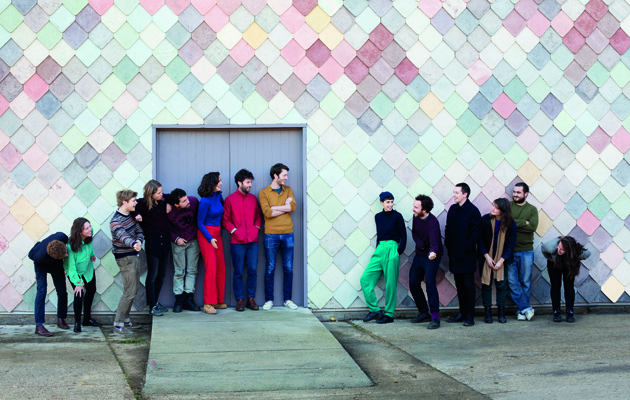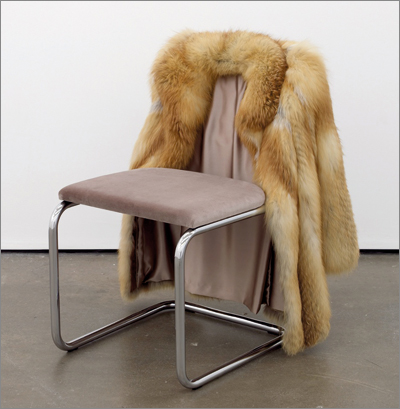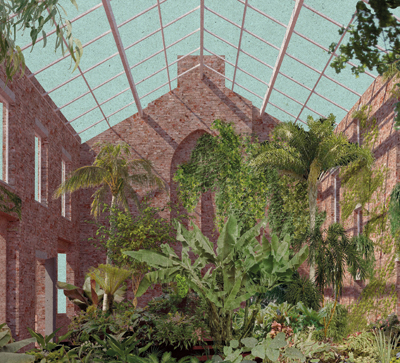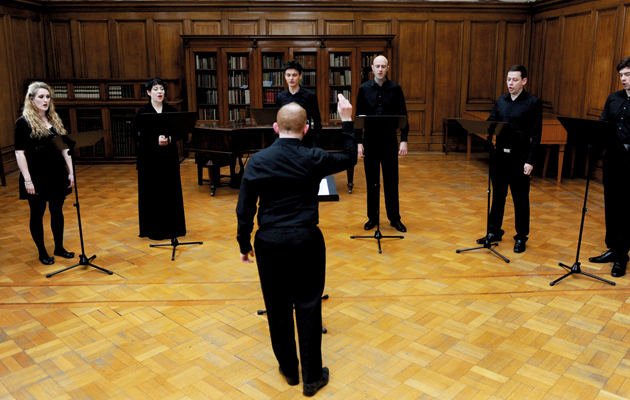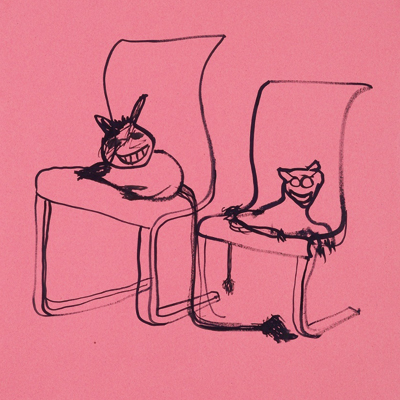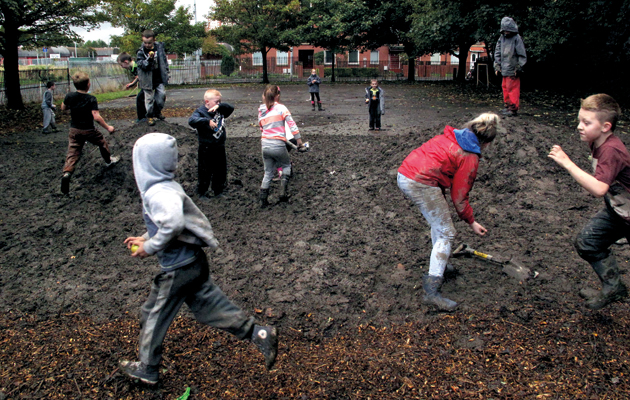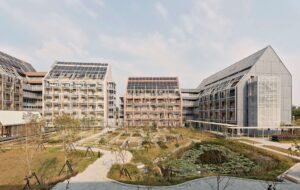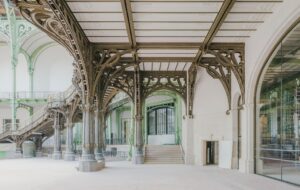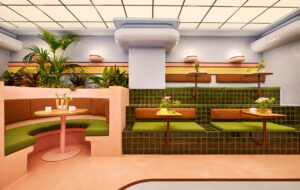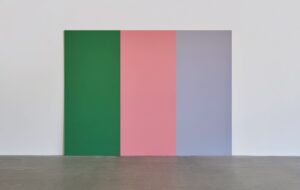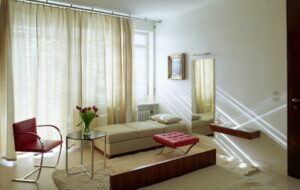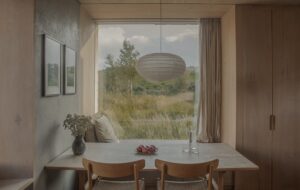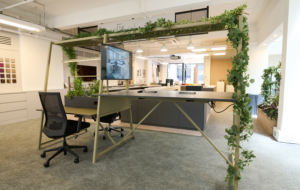|
|
||
|
The worlds of art and architecture exist in a constant state of mutual jealousy. As the Turner prize exhibition opens, we consider whether the nomination of architectural collective Assemble for this year’s award is likely to bring them any closer together When Assemble, a young practice of talented architects and other design practitioners, were nominated for the Turner prize, it prompted some envious remarks from their peers. “Why them, why now?” was a common response. They were, after all, nominated for doing good work on a heritage project on terraced housing in Liverpool. Architects do work like this, if not all the time, then frequently. But this fleeting kind of professional envy – where we experience a fleeting wince at someone else’s success – is not the envy that I want to discuss. There is a more fundamental envy at work here, one between two modes of artistic expression: the visual arts and architecture. If we want to know why the judging panel of the UK’s largest art prize should acknowledge an architectural design, we need to look first at what is happening in the art world. And I use art world rather than art deliberately. Art is doing just fine. Great art is being made everywhere. It’s just that the market selling it has hypertrophied. Great works of the past are in short supply and buyers are now chucking money at stuff that hasn’t had 50 years to bed down in either the popular consciousness or academic consideration. In addition, the individuals in the public institutions who facilitate the transfer of that work to the public, bullied by governments, traumatised by increased competition and bamboozled by new media, have generally lost sight of who that public is. Nothing made this more clear than the embarrassingly “political” art on display at this year’s Venice Art Biennale. Oh look, a charcoal of a bust of Karl Marx.
The Infrastruktur installation by Nicole Wermers, featuring Marcel Breuer chairs with fur coats sewn in And it isn’t just political art that is being produced, but “community art” too. Lyn Gardner recently suggested in The Guardian that “if every artist was a community artist, then perhaps the community would value the arts and fight to ensure their survival”. It is a seductive idea but problematic for two reasons. First, who exactly is your community and who is defining it? Community can become an exclusive term as easily as an inclusive one. It is also a concept that is now quickly defined by politicians and not by “communities” themselves, if indeed they exist. Secondly, artists express themselves through their art. If their art becomes a means of justifying state funding for themselves then they – unintentionally perhaps – cease to become artists and become self-propagandists instead. So, to the art world, it looks as if architects have it all sorted when it comes to their public. Even a bad architect’s building gets used by the public, doesn’t it? Well, yes, to a degree – but that’s to confuse a user with the public as a collective entity and as a vital philosophical concept. Art functionaries should think a bit deeper about who is engaging with what. Take Theaster Gates. He is a trained urban planner and, on the strength of work shown at the Bermondsey White Cube, a half-decent artist. He invested in property in the South Side of Chicago in 2008 after the housing market collapse. He then made art and used the profits from it and from his investment to buy and build more social enterprises. The art that emerges is often a satirical gesture of the relationship between his world in south Chicago and the art world, but it keeps his urbanist agenda moving forward. It’s debatable whether the best of his work is art.
Four Streets, Assemble’s regeneration project in Toxteth, Liverpool However, the Turner Prize committee were in search of a British Theaster Gates and went a step further. They happened upon a group of young architects who had hitherto employed DIY tactics to create self-initiated projects and who are now working with a community planner as a client, and they got excited. Here is a kind of project and architectural response – one of the houses in the long terraces in Assemble’s Granby Four Streets in Liverpool will become a winter garden – which might be critically applauded but which is very difficult for architects to make a living from. It is also telling that, in the same month that Assemble was nominated for the Turner Prize, 120 of the top architecture practices were asked by the Architects’ Journal to vote for the person they felt was doing most for architecture and they chose Thomas Heatherwick. Here is a profession, which has generally been knocking out contextual modernism with varying degrees of politeness for a decade now, turning to a maverick non-architect who often creates self-consciously wacky buildings and saying, yeah, he’s the guy. We wish we were him. |
Words Tim Abrahams
Portrait Harry Borden
Above: Some of the Assemble team outside their Yardhouse studio in Stratford, east London |
|
|
||
|
DOUG by Janice Kerbel, a one-off operatic piece performed at the Mitchell Library in Glasgow in 2014 |
||
|
The greatest irony of all is that, while art is envying architecture for the apparent short cut it has to public engagement, at the same time, architecture is envying art. In addition to an apparent freedom from formal constraints, architects envy the art world’s ability to exist free of the property market. Earlier this year, Sam Jacob, co-founder of FAT Architecture, wrote a perceptive piece for this magazine on Assemble’s Turner Prize nod and the frustrations of practising architecture, but I’d take issue with one thing he wrote: “For those of us who have been fighting the good fight for architecture to exist on its own terms, rather than as a service provider to the property industry, [Assemble’s] recognition can be nothing but great news.” Aldo Rossi spent his later years trying to work out how architecture could exist on its own terms and he concluded it had to make deals with the devil first. Only then may designers consider the art of what they are doing and how the buildings they are making might augment, improve or change the fabric of the public realm. It is perhaps a thankless task.
DWA, a 2012 work by Bonnie Camplin And if we are looking to the world of art to free us from the market we should be careful. The art market has its own trappings, and art has its own conventions. I can see what Jacob and others find so appealing in the alternative of architectural speculation through art, but the idea that art can simply remain as an open proposal for a surrogate architecture is sadly a fallacy. As a contributor to the Drawing Matter project at drawingmatter.org, I spend a good bit of time looking at drawings of speculative architecture. And I’d say that as soon as an architect generates a drawing primarily for the art world, it ceases to function as a genuine architectural proposition. You can take the work of the late 1960s Italian radicals as a case in point. Ugo La Pietra’s works become fetishised art objects rather than open possibilities as soon as he effectively decides he’s never going to build anything. The PoMo buildings of the ex-Superstudio types may embarrass them today, but to me they are a sign of a brave struggle to create art through other means. |
||
|
Assemble’s Baltic Street Adventure Playground in Glasgow |
||
|
To be clear, the distinctions between art and architecture have their uses. In his book The Art–Architecture Complex, Hal Foster quotes Richard Serra: “Every language has a structure about which nothing critical in that language can be said.” Only a second language with a different structure can perform the analysis. Indeed, one might go further and say that when one language addresses another, it cannot help but be critical. Once we can see that Frank Gehry was influenced by Robert Rauschenberg’s use of collage when designing his own home, the melancholic aspect of the painter’s work becomes all too clear. Both are fragmentary but in Gehry’s work, largely because it is a house, there is a greater sense of cohesion. Just one of the many differences between the two forms is that architecture must cohere in a way that art doesn’t have to. When it comes to the relationship of art and architecture, there’s much to discuss but let the discussion be free of envy and of muddled ideas about respective public roles. This article first appeared in Icon 147: Sins (below). Earlier this year, Sam Jacob wrote that Assemble’s nomination for the Turner Prize “reveals architecture’s failings” – click here to read the article |
||
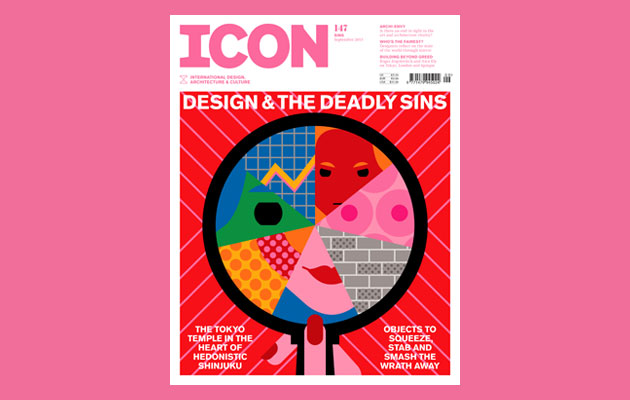 |
||

